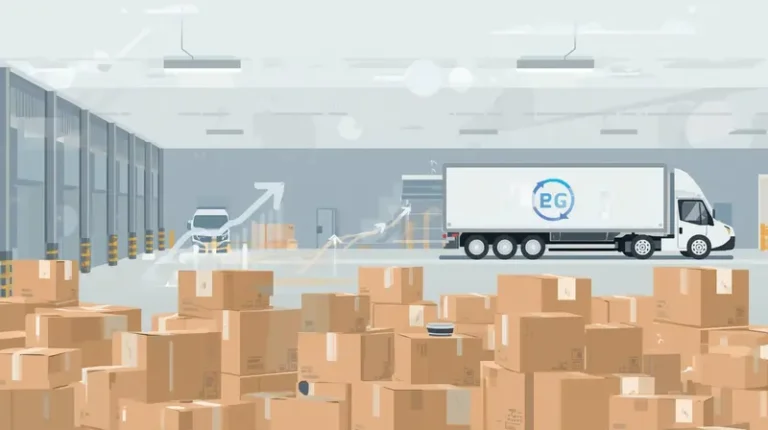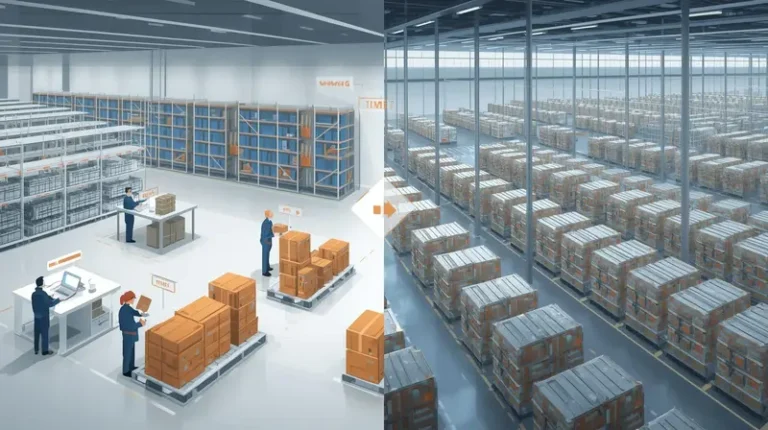Cahoot vs Veeqo: A Value-Driven Comparison for Modern Ecommerce Sellers

Last updated on June 20, 2025

In this article
 9 minutes
9 minutes
- At a Glance: Cahoot vs Veeqo
- Pricing Models & Carrier Rates
- Order Routing & Workflow Automation
- Multi-Channel Capabilities
- Inventory & Warehouse Management
- Support & Learning Curve
- Amazon Buy Shipping & SFP
- Data You Can Actually Use
- Built for Amazon Sellers, but Not Owned by Amazon
- Pros & Cons
- Cahoot vs. Veeqo: What Sellers Are Saying
- Final Verdict
- Frequently Asked Questions
When ecommerce sellers start scaling across marketplaces like Amazon, eBay, Walmart, and Shopify, their shipping software can either accelerate that growth or slow them down. Two platforms built to handle multi-channel shipping are Veeqo and Cahoot. Both offer discounted shipping labels and order management tools, but the similarities end there. This in-depth comparison will explore what each software delivers, what it lacks, and which one ultimately supports fast-moving ecommerce teams better.
At a Glance: Cahoot vs Veeqo
|
Feature
|
Cahoot
|
Veeqo
|
|---|---|---|
|
Multi-Channel Order Import
|
Yes
|
Yes
|
|
Discounted Carrier Rates
|
Yes
|
Yes
|
|
Rate Shopping Across Carriers
|
Yes
(Autonomous) |
Yes
(Basic) |
|
Bulk Label Printing
|
Yes
(Autonomous) |
Yes
(Traditional) |
|
Support for Own Carrier Accounts
|
Yes
|
Yes
|
|
Automation Rules & Order Routing
|
Yes
(Highly Configurable) |
Limited to Presets
|
|
Intelligent Package Selection (Cartonization)
|
Yes (AI-powered)
|
No
|
|
WMS Features
|
Yes
|
Partial
|
|
Inventory Visibility
|
Yes
(real-time) |
Yes
(limited granularity) |
|
Returns Workflow Integration
|
Optional Peer-to-Peer Returns
|
Basic RMA
|
|
Live Customer Support
|
Yes
(Help Desk, Phone) |
No phone support
|
|
Amazon Buy Shipping API Certified
|
Yes
|
Yes
|
|
Supports Amazon SFP
|
Yes
|
No
|
|
Open to 3PLs
|
Yes
|
No
|
Pricing Models & Carrier Rates
Both Cahoot and Veeqo offer access to discounted shipping rates from major carriers like UPS, FedEx, and USPS. Veeqo highlights its access to Amazon-negotiated carrier rates, especially beneficial for FBM sellers. However, it’s worth noting that Cahoot also offers deeply discounted rates through its aggregated carrier network, and unlike Veeqo, sellers aren’t required to be Amazon merchants to access them.
Users have praised Veeqo’s rates in particular, though some feel that the real-world savings depend on volume and location. One user on Trustpilot noted, “Veeqo offers good rates, but it doesn’t always beat what I negotiated directly with FedEx.” That said, having an option for both Veeqo and using your own account provides flexibility.
Cahoot lets sellers compare real-time rates across carriers, or even better: automate all the rate shipping and bulk shipping label generation based on the desired logic (cheapest, fastest, delivery promise, signature-required, etc.). This level of autonomous support (removing the human) goes a step further than Veeqo’s more manual workflows.
Order Routing & Workflow Automation
This is where the gap between the two platforms widens. Cahoot excels at automation.
Cahoot’s rule engine lets sellers automatically assign orders to specific warehouses, select packaging based on product dimensions, and pick carriers based on dynamic rules. It includes AI-powered cartonization, reducing overpackaging and optimizing label selection at scale. This feature alone can save high-volume shippers thousands per month.
Veeqo supports some automation, but according to multiple reviews, the rules engine lacks flexibility. As one user put it: “You can automate some parts of the shipping process, but complex routing logic just isn’t possible.” Another noted on G2, “Our warehouse team constantly has to manually override presets in Veeqo to get the right shipping option.”
Cahoot also offers the option to import product master data, assign SKUs to multiple warehouses, and automate routing for distributed fulfillment. These features are especially helpful for sellers managing multiple sales channels and warehouse locations.
Multi-Channel Capabilities
Both platforms support multi-channel order import from Amazon, eBay, Shopify, Walmart, Etsy, and more. Veeqo is tightly integrated with Amazon (it’s owned by Amazon), which brings advantages for FBM sellers, like access to Buy Shipping and automated order syncing.
However, some sellers note that Veeqo prioritizes Amazon workflows and that the support for non-Amazon channels lacks depth. A Trustpilot reviewer stated, “It’s clearly built with Amazon in mind. Shopify orders don’t always sync correctly, and the custom mapping is limited.”
Cahoot offers native integrations with all major ecommerce platforms, with equal priority across sales channels. That neutrality is useful for brands expanding beyond Amazon and looking to centralize operations across multiple storefronts.
It also means Cahoot isn’t limited by Amazon policy shifts or ecosystem changes. For businesses hoping to grow a multi-platform brand, that independence matters.
Inventory & Warehouse Management
Veeqo includes basic inventory tracking tools but doesn’t offer a full warehouse management system (WMS). Its UI shows available stock and syncs between platforms, but lacks pick/pack workflows, barcode scanning, and location-based inventory management.
Cahoot includes WMS features as part of the platform, with no need for third-party plugins. Sellers can assign bin locations, manage cycle counts, and generate pick lists automatically. One Cahoot user shared, “We reduced picking errors by 60% after switching from ShipStation to Cahoot because the WMS features are built in.”
For growing brands with even modest warehouse operations, this difference is key. It consolidates tech stack complexity and reduces reliance on disconnected tools.
Support & Learning Curve
Cahoot provides live onboarding, in-platform chat, and phone support. Multiple users note how responsive the support team is. One review on G2 says, “Every time I had an issue, Cahoot got back to me within minutes. I never felt like I was waiting around.”
Veeqo, on the other hand, has no phone support, and several users on Trustpilot and Reddit cite frustrating support delays. One review read, “You submit a ticket and wait… sometimes for days. It’s not great when your entire shipping flow is paused.”
Veeqo also has a steeper learning curve for non-Amazon users. The dashboard is robust but not intuitive for sellers focused on Shopify or direct-to-consumer models.
Amazon Buy Shipping & SFP
Both platforms are certified for Amazon Buy Shipping, meaning they help sellers remain compliant with Amazon’s policies and tracking requirements. However, only Cahoot supports Seller Fulfilled Prime (SFP).
For Amazon SFP sellers, this is a major differentiator. Cahoot’s compliance engine ensures same-day label printing, cut-off time enforcement, and late-delivery prevention. Veeqo does not support this, which rules it out for many brands trying to maintain the Prime badge.
Data You Can Actually Use
With Veeqo, many sellers are flying blind. Sales data is fragmented. Shipping costs aren’t always transparent. And pulling that data often means wrangling spreadsheets with missing headers or running into failed exports.
Cahoot makes it easy to analyze profits, understand shipping costs, and track eligible shipments in one dashboard. You get full access to real performance data without needing to bounce between platforms.
Built for Amazon Sellers, but Not Owned by Amazon
Veeqo is owned by Amazon. That means anything you do on the Amazon platform is potentially visible. For Amazon sellers trying to protect their strategy or operate across other channels, that’s a problem.
Cahoot is fully compatible with Amazon FBM, FBA, and Buy Shipping, but stays independent. You get the lowest rates available, without locking yourself in deeper with Amazon or giving up your leverage.
Pros & Cons
Cahoot vs. Veeqo: What Sellers Are Saying
“Using Veeqo costed us so much time. Exports kept failing, inventory didn’t match, and the UI was just confusing. Cahoot gave us back control.”
~ Multichannel seller, apparel industry
Speak to a fulfillment expert
“The only reason I stuck with Veeqo was because it was free. But once our shipping volume increased, we needed more, and Cahoot delivered.”
~ Electronics brand owner
Speak to a fulfillment expert
Final Verdict
Veeqo is a solid, free tool for Amazon-first sellers who want to print shipping labels and access decent rates with minimal setup. But it lacks depth in automation, support, and warehouse operations.
Cahoot, by contrast, is built for scale. It’s ideal for ecommerce brands that are serious about operational efficiency and growth. From smart automation to robust warehouse tools and superior customer support, Cahoot is the better long-term investment for sellers looking to streamline operations across multiple platforms.
If you’re running a high-volume ecommerce business that ships across multiple sales channels, handles inventory in multiple locations, or simply wants to reduce costs and errors at scale, Cahoot is the clear winner.
Don’t settle for free if it slows your business down.
Choose smarter. Explore how Cahoot can simplify your shipping and scale with your brand.
Frequently Asked Questions
Is Veeqo really free, and what’s the catch?
Yes, Veeqo is technically free, but many sellers report that key features like bulk shipping, inventory management, and reporting are limited. You may still need your own carrier accounts, and support can be slow.
How does Cahoot’s shipping software help reduce shipping costs?
Cahoot gives sellers access to discounted rates across major carriers like UPS, FedEx, and USPS, with no Veeqo credits or software bugs required. Plus, bulk shipping tools and data-driven insights help optimize your entire shipping process.
Can I use Cahoot if I sell on Amazon and other ecommerce channels?
Absolutely. Cahoot supports multiple sales channels, including Amazon, Walmart, eBay, and Shopify, while keeping inventory levels synced across all platforms. Unlike Veeqo’s integration, Cahoot’s system is fast, clean, and flexible.
What makes Cahoot better for inventory management than Veeqo?
Cahoot simplifies multi-channel inventory with real-time stock tracking, automated syncing, and alerts to prevent overselling. Veeqo users often struggle with managing inventory across platforms due to sync lags and poor data visibility.
Why do sellers leave Veeqo for Cahoot?
Many sellers switch when they realize Veeqo’s free model comes with trade-offs: limited support, Amazon ownership, clunky UI, and frustrating data export issues. Cahoot offers a full-featured, seller-first solution that saves time and drives smarter decisions.

Turn Returns Into New Revenue





